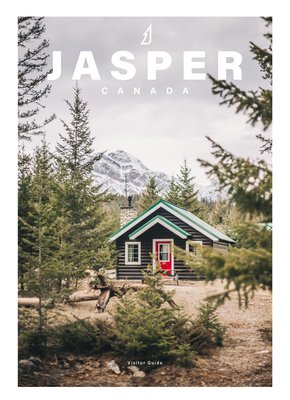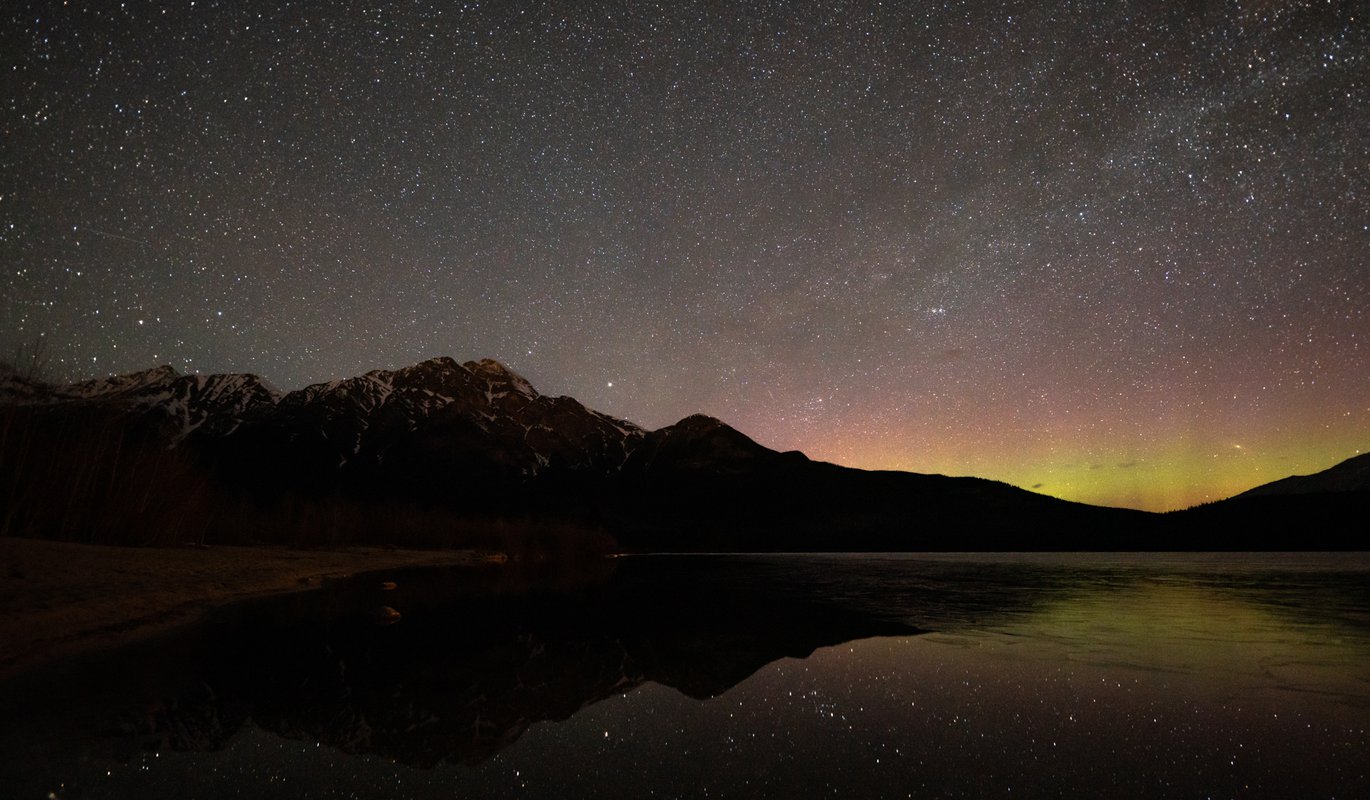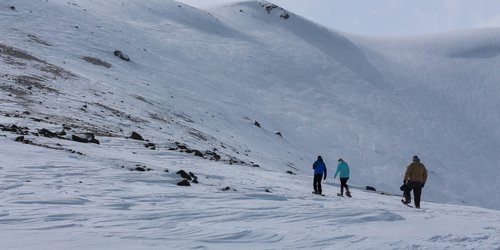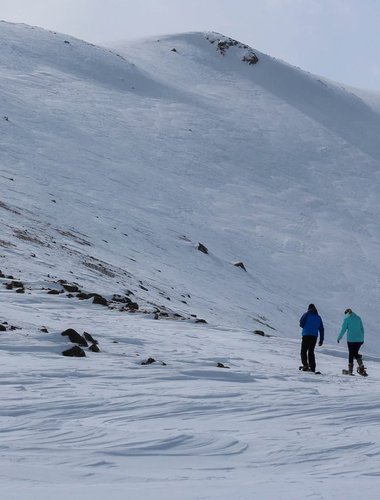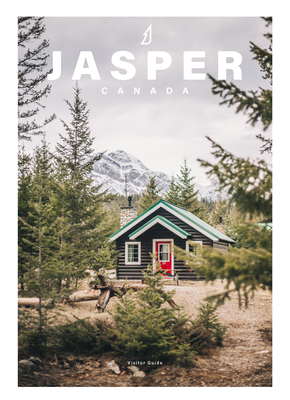Darkness is disappearing. We don’t mean that as some sort of good-over-evil metaphor; nighttime is literally fading away in much of the world. Light pollution—defined as an excessive use of artificial light causing serious environmental consequences—has increased as civilization has grown and is gradually making starlit skies a thing of the past.
Dark Sky Preserves aim to reverse, or at the very least slow the trend. Jasper National Park was designated a dark sky preserve in 2011 by the Royal Astronomical Society of Canada.
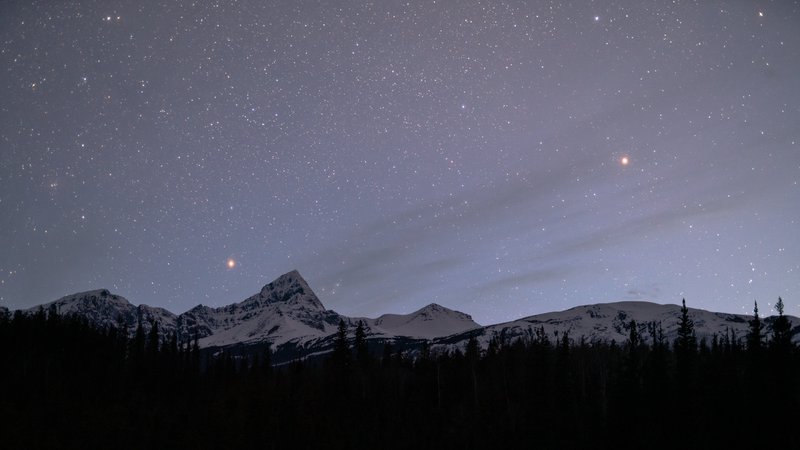
Jeff Bartlett
How do Dark Sky Preserves help?
By limiting or eliminating outdoor artificial lighting, these protected areas preserve the night sky, which is important for the health of many human and animal biological systems. The three different types of light pollution (glare, light trespass and skyglow) can disrupt the rhythms of nocturnal wildlife, confuse migratory patterns, alter predator-prey relations, and other kinds of ecological harm.
Most nighttime outdoor lighting set-ups are inefficient; they cast beams that are overly bright and poorly targeted, meaning that much the light spills uselessly skyward rather than focusing on the actual objects and areas that people want illuminated. Dark Sky Preserves use a variety of methods to combat this problem. Jasper has made a special commitment to protect and preserve the night sky and to reduce or eliminate light pollution in all its forms.
Dark Sky Preserves also actively work to educate and promote the reduction of light pollution to the public and nearby municipalities. The Jasper Dark Sky Festival is a big part of that work. The 2020 Festival is happening October 16-25.
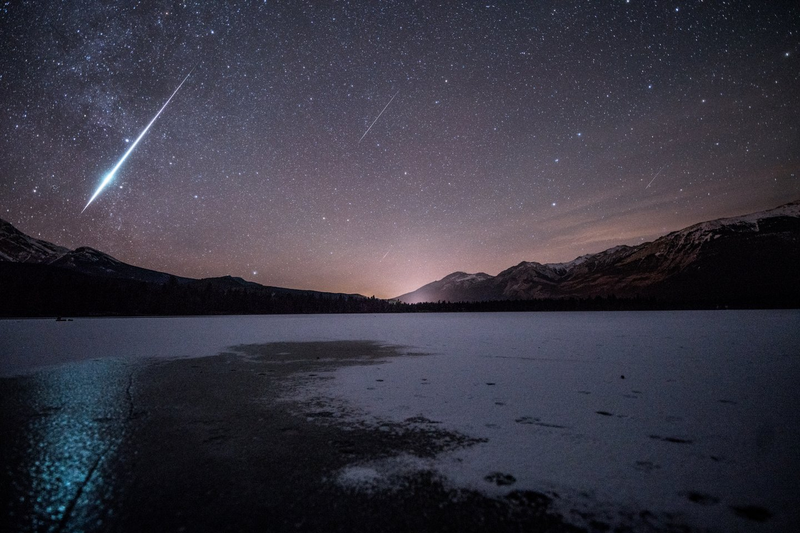
Jack Fusco
Where is the Jasper Dark Sky Preserve?
The entire national park is listed as a dark sky preserve. It is one of 17 designated dark sky preserves in Canada, and is the second largest in the world. It also happens to be the largest accessible Dark Sky Preserve - meaning there’s a town within the limits of the preserve.
However, there are some places within the national park that are better suited for stargazing. Here’s a few of our favourites:
Pyramid Island – Located on Pyramid Lake (also a winning spot to stargaze), this scenic small island looks out on Pyramid Mountain and has multiple benches and covered shelters
Lake Annette – Just a few kilometers outside the town of Jasper sits this beachy lake, equipped with picnic tables. Bring some blankets, lie back and relax in the sand for a few hours as you take in the enormity of the universe.
Lac Beauvert – Green-hued in daylight, this lake is on the luxurious grounds of the Fairmont Jasper Park Lodge. Also on the property? The Jasper Planetarium, where visitors can experience the best that the dark sky preserve has to offer and look through the biggest telescopes in the Rockies.
Maligne Lake - Most backcountry locations in the national park will deliver great views if the skies are clear. But Maligne Lake is especially special for its famous, only-reachable-by-boat landmark, Spirit Island.
Summit of Whistler’s Mountain – Unless you’re keen on a long, steep hike, this alpine panoramic lookout is not an option for stargazing except in the months of September and October, when the Jasper SkyTram operates their annual Star Sessions. Ride the SkyTram around a kilometre closer to the stars
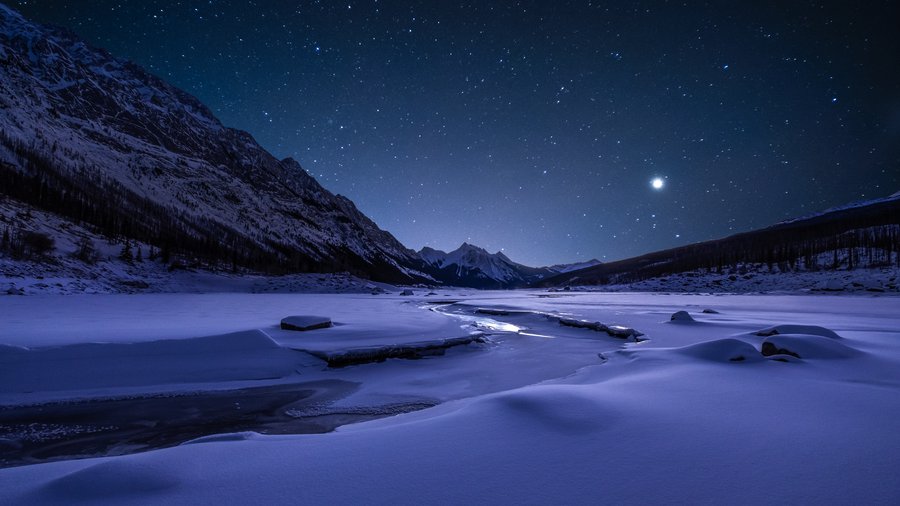
Jeff Lewis Photography
